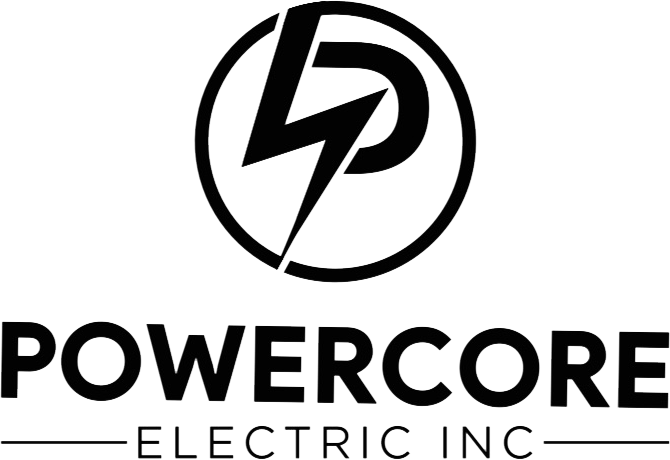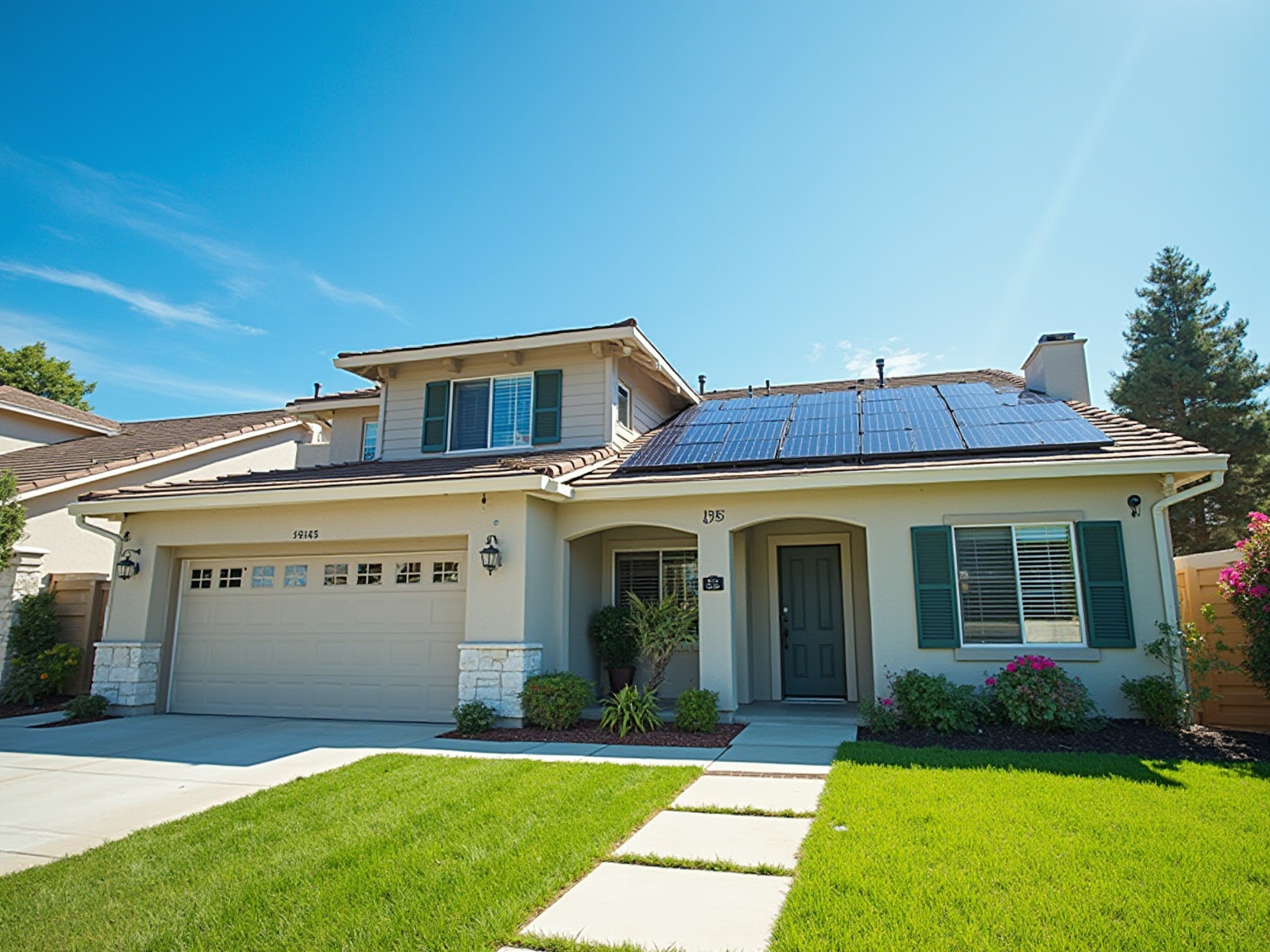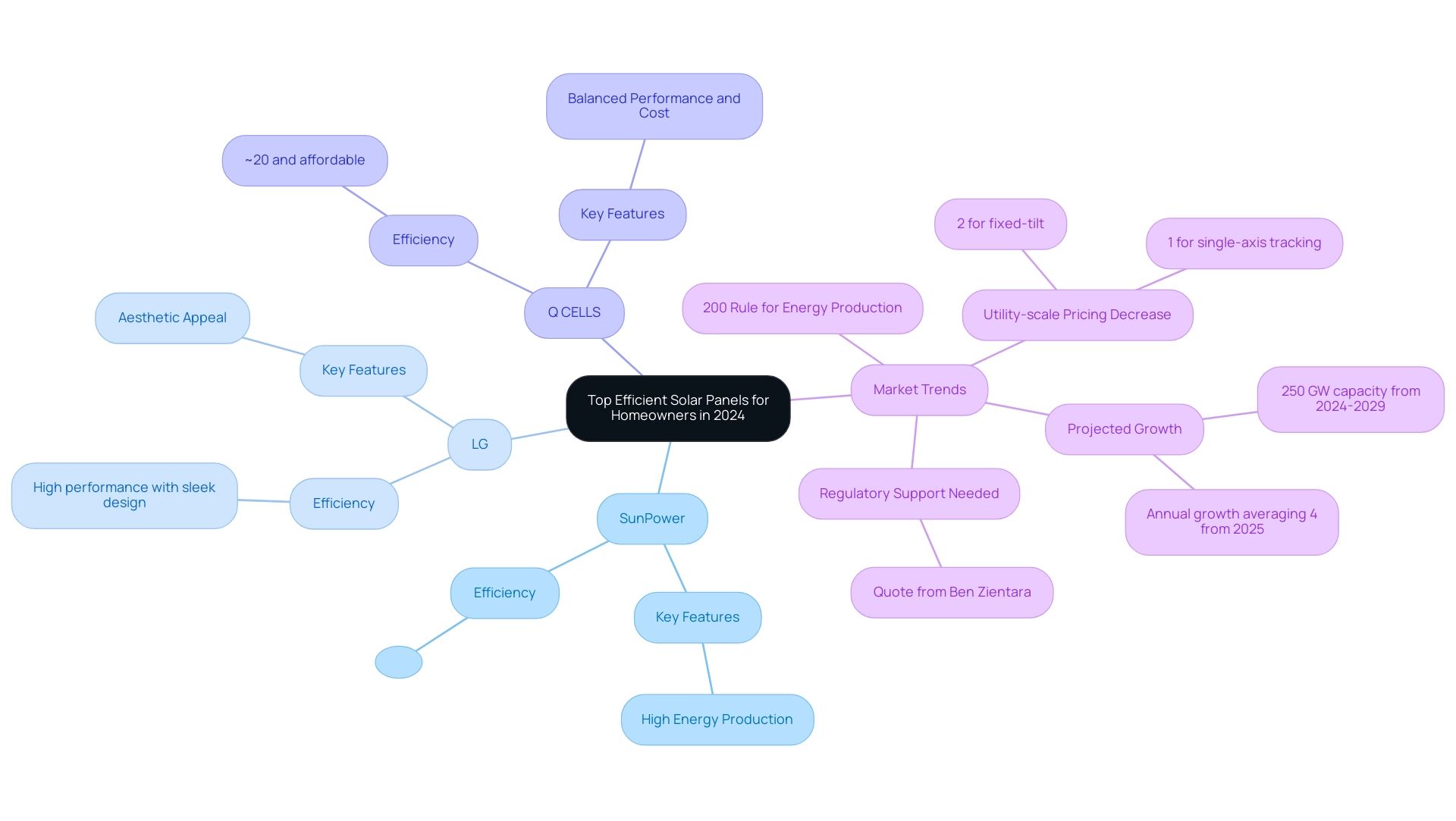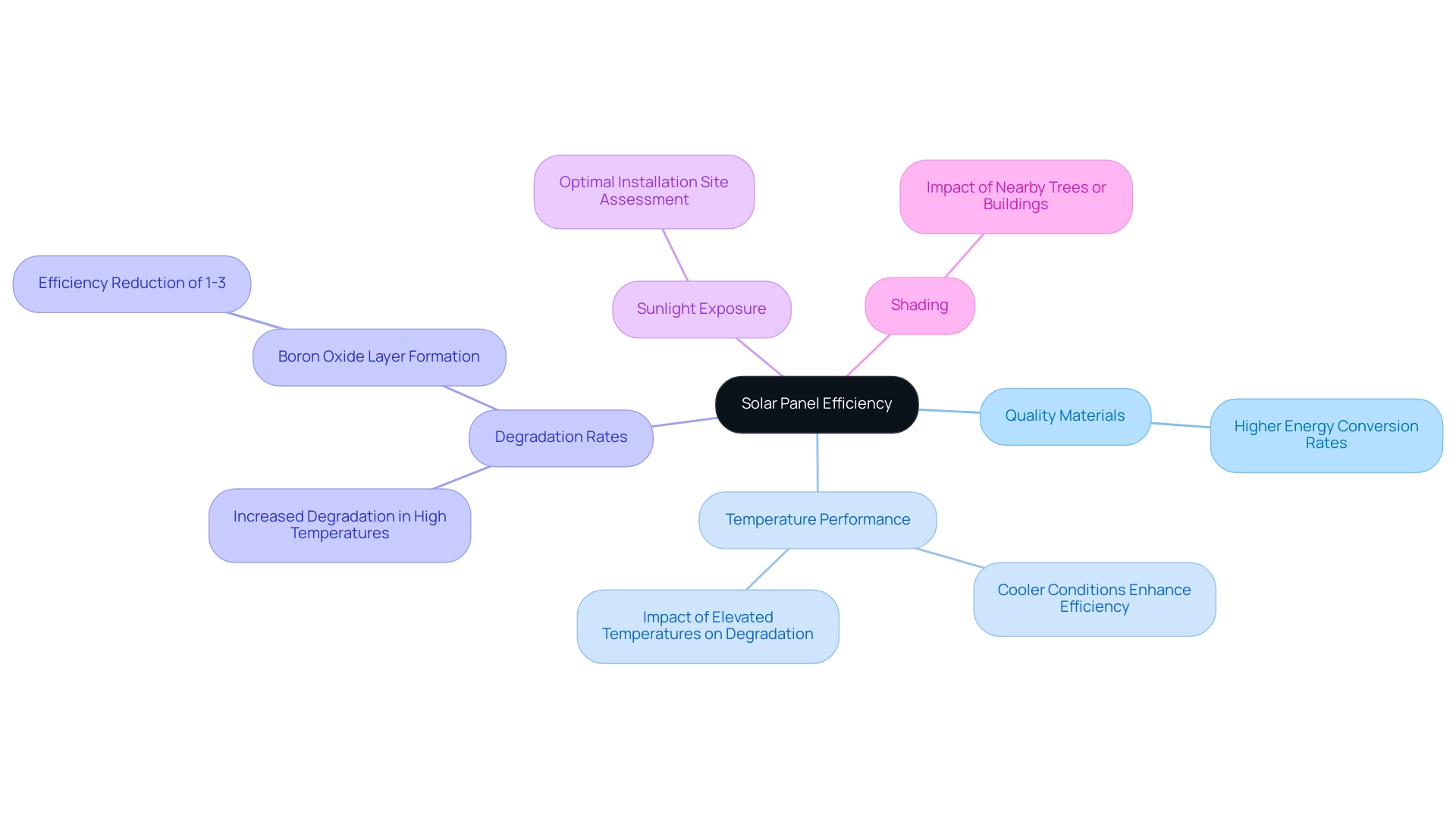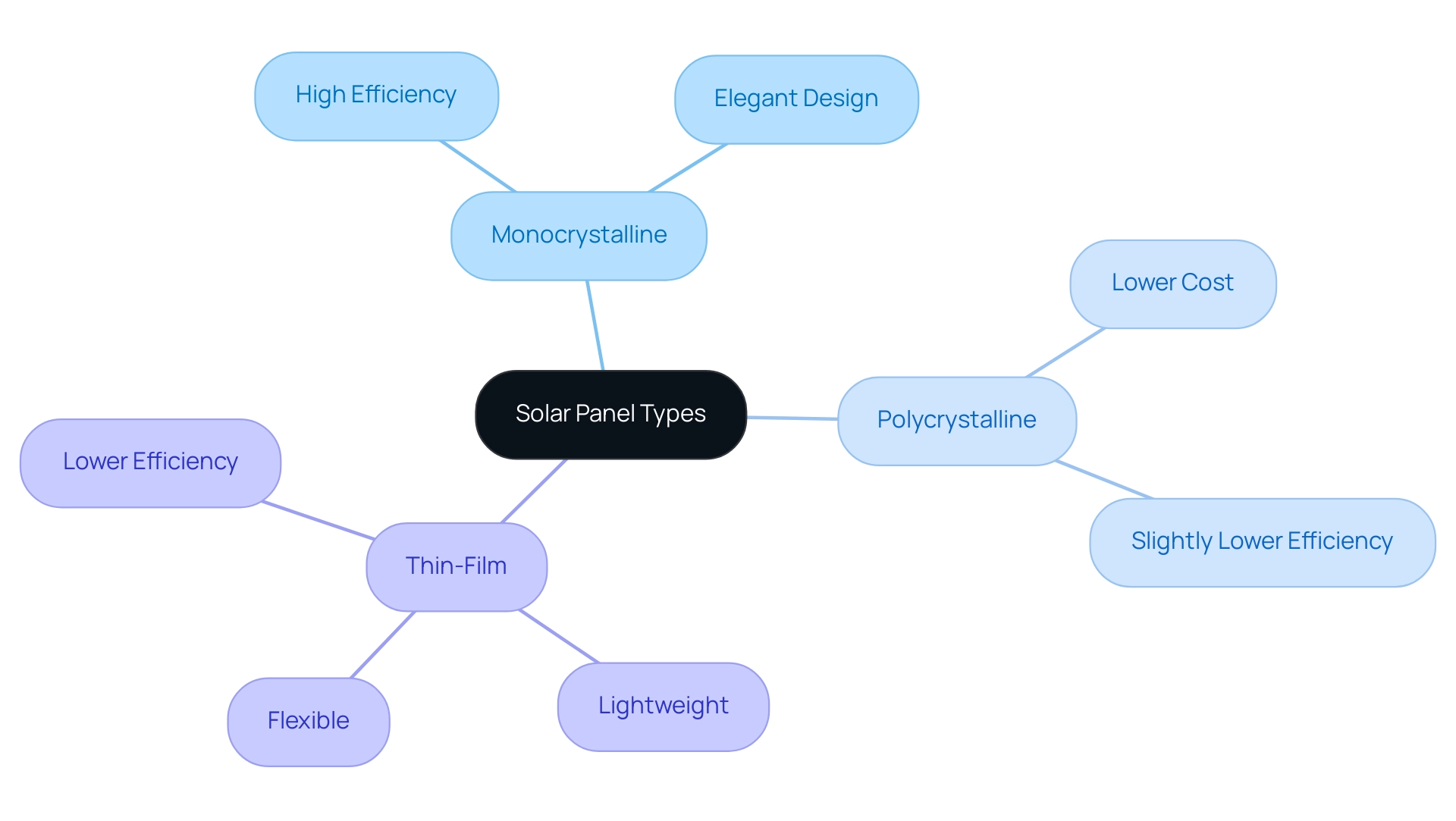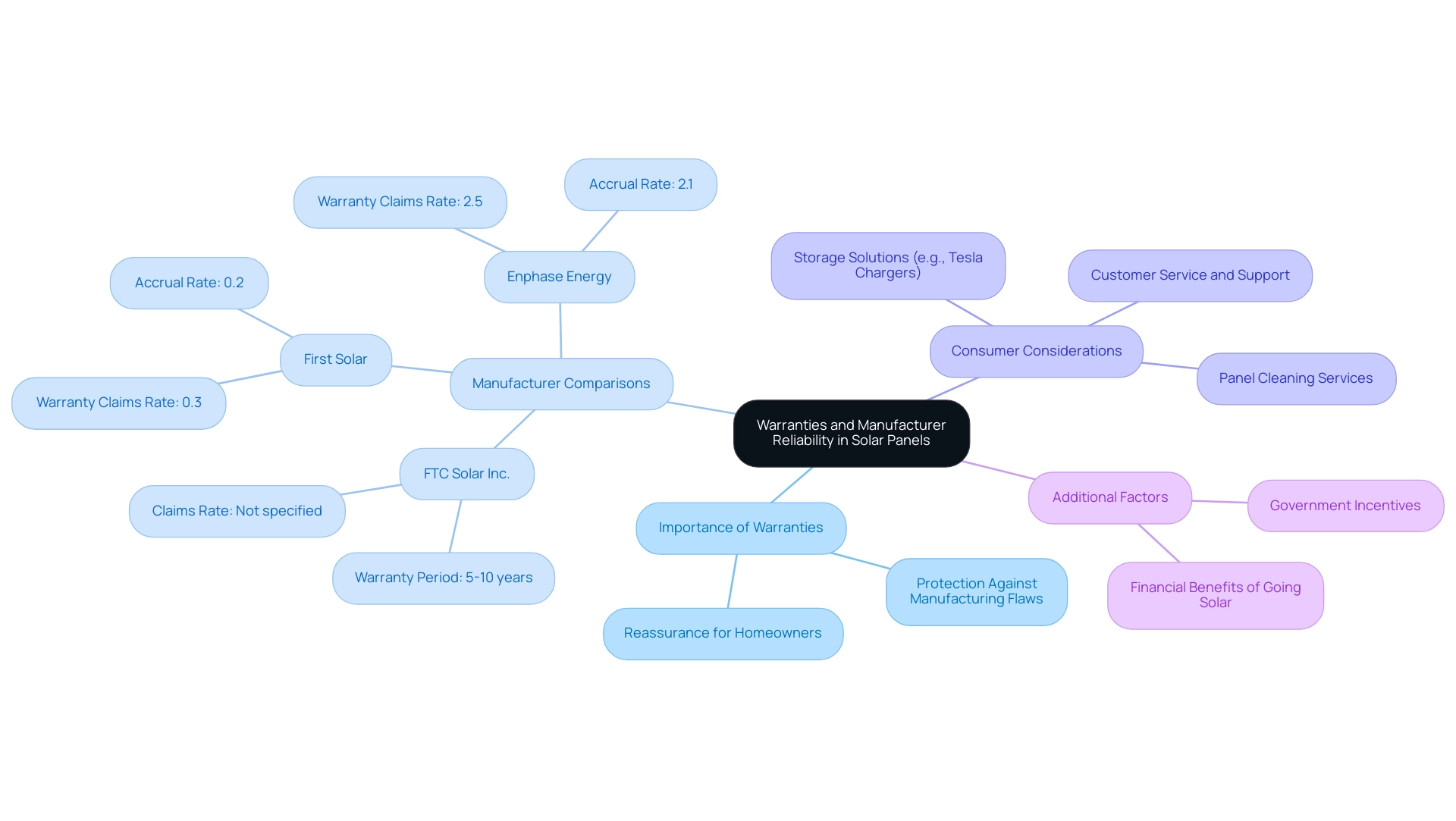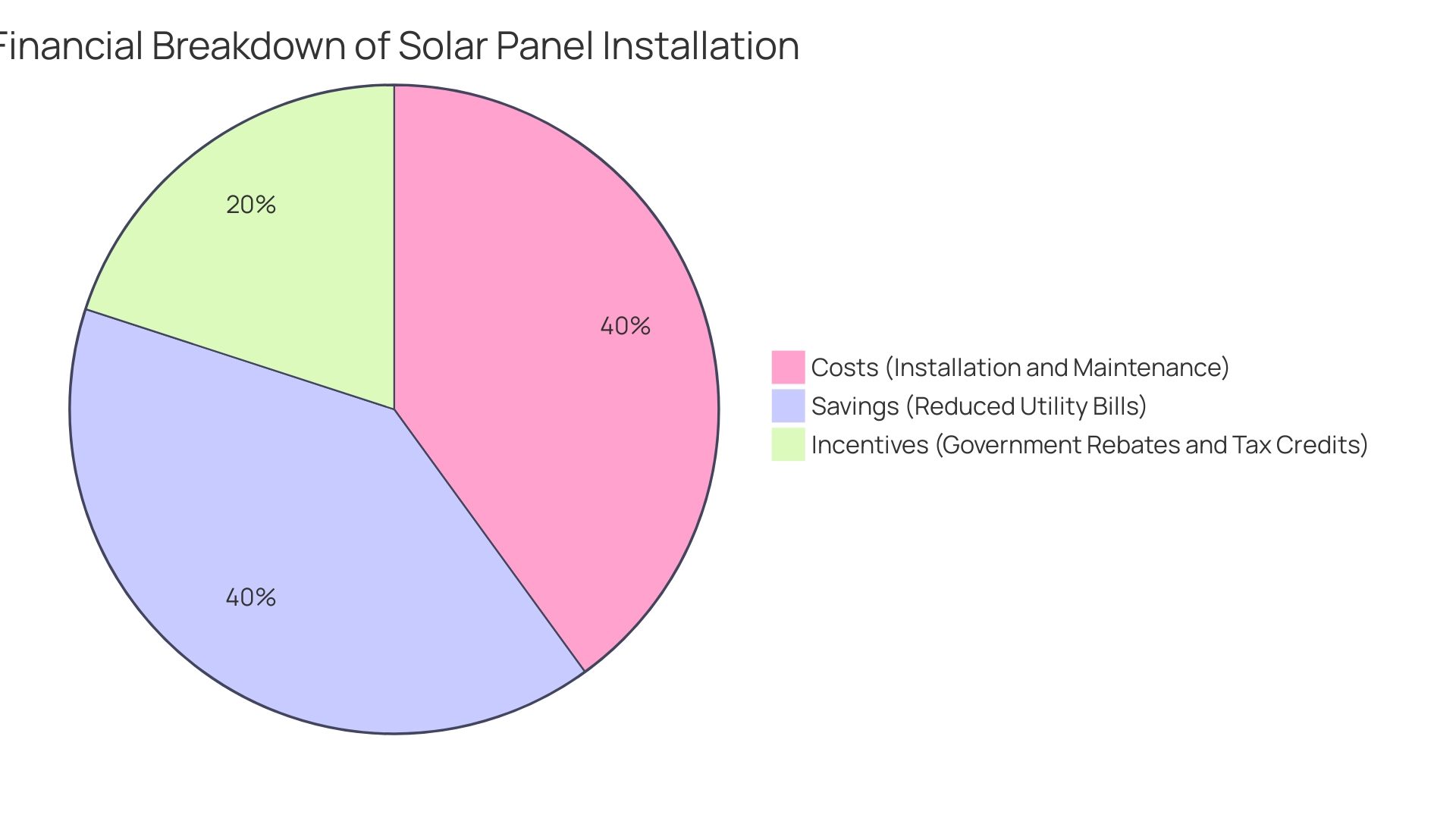Overview
The most efficient solar panels for homes in 2024 include the SunPower Maxeon series, LG NeON series, and Q CELLS, with performance ratings often exceeding 22% for SunPower. The article supports this by detailing their efficiency ratings, affordability options, and the importance of selecting the right system based on individual energy needs and available space, while also emphasizing the benefits of government incentives that make solar energy more accessible.
Introduction
As homeowners increasingly seek sustainable energy solutions, the landscape of solar technology is evolving rapidly in 2024. With a range of efficient options available, from high-performing panels by SunPower and LG to budget-friendly alternatives from Q CELLS, making an informed choice can feel overwhelming.
Understanding the nuances of solar panel efficiency, types, warranties, and financial incentives is essential for anyone looking to harness the power of the sun. This guide will explore the top solar panels on the market, delve into the critical factors influencing efficiency, and help homeowners navigate their solar journey with confidence.
Whether aiming to reduce utility bills or contribute to a greener future, there’s a solar solution tailored to fit every household’s needs.
Top Efficient Solar Panels for Homeowners in 2024
As we step into 2024, homeowners seeking efficient solar solutions will find standout options from SunPower, LG, and Q CELLS. The SunPower Maxeon series is especially remarkable, showcasing performance ratings that frequently surpass 22%, which positions it among the most efficient solar panels for home, ideal for individuals aiming to enhance their energy production and lower utility expenses. Not to be overlooked, LG’s NeON series provides homeowners with some of the most efficient solar panels for home, combining high performance with a sleek design that many find appealing.
For those on a tighter budget, Q CELLS is recognized as one of the most efficient solar panels for home, delivering efficiencies around 20% while balancing performance and affordability. Notably, utility-scale system pricing has decreased by 2% for fixed-tilt and 1% for single-axis tracking year-over-year, reflecting a positive trend in the market that could benefit homeowners. When selecting the most efficient solar panels for home, it’s crucial to take into account your available area and particular energy requirements, ensuring you follow recommendations like the 200% rule, which indicates that homeowners can install systems that produce up to 200% of their yearly energy usage.
This rule helps in sizing the system appropriately and can lead to additional savings on utility bills by ensuring the use of the most efficient solar panels for home. As Ben Zientara, a Policy Analyst for renewable energy, emphasizes, ‘we have all the technology we need to do this today, but we need help from state and federal legislators and regulators to deploy, deploy, deploy.’ Furthermore, choosing the appropriate inverter for photovoltaic systems is vital; homeowners should take into account aspects like compatibility with their modules, efficiency ratings, and warranties.
With a growing market and advancements in technology, the most efficient solar panels for home provide an energy solution for every eco-conscious homeowner looking to make a positive impact on their energy consumption. According to the case study titled ‘Best Photovoltaic Systems of 2024,’ the SolarReviews team compiled an annual list of the most efficient solar panels for home based on installer preferences and new data regarding domestic manufacturing capacity, serving as a valuable resource for consumers.
Understanding Solar Panel Efficiency: Key Factors and Considerations
When it comes to the most efficient solar panels for home, several essential factors come into play that every eco-conscious homeowner, especially those renting in Long Beach, should be aware of. Quality materials are essential, as higher-quality components are crucial for producing the most efficient solar panels for home, achieving better energy conversion rates. For renters in hotter climates, it’s vital to consider temperature performance.
Research suggests that photovoltaic systems usually operate more effectively in cooler conditions. For example, a study showed that a group attained a performance level of 20.64% on day ten, demonstrating how temperature can influence results. Furthermore, a case study titled ‘Impact of Climate on PV Degradation Rates’ shows that elevated temperatures contribute to increased degradation rates in solar modules, particularly in rooftop systems where airflow is limited.
As the temperature increases, degradation can result in a decrease in performance over time. Notably, sunlight exposure can create a layer of boron oxide on the surfaces, potentially reducing efficiency by 1-3% within the first 1,000 hours of use, underscoring the necessity of managing temperature exposure. Additionally, shading from nearby trees or buildings can significantly reduce power production, making it crucial to assess your installation site for optimal sun exposure.
For a deeper understanding of how photovoltaic systems operate, renters can refer to user manuals such as ‘How Photovoltaic Systems Work on a House: A Comprehensive Guide.’ Furthermore, it is essential to investigate government initiatives and financial incentives offered to Long Beach renters, which can make renewable energy solutions more accessible and affordable. As Aris Vourvoulias, a former writer with managerial experience in European markets, highlighted, understanding these factors is crucial for homeowners to make informed choices about the most efficient solar panels for home that will operate effectively in their distinct settings, ensuring they optimize their energy investment.
Comparing Solar Panel Types: Monocrystalline vs. Polycrystalline vs. Thin-Film
When it comes to choosing the most efficient solar panels for home, you’ll find three main contenders: monocrystalline, polycrystalline, and thin-film varieties. Monocrystalline modules are frequently praised as some of the most efficient solar panels for home use due to their high effectiveness and elegant design, making them a favorite among homeowners who desire both performance and aesthetics. If you’re monitoring your budget, polycrystalline modules might pique your interest as they generally arrive at a lower price point, albeit with slightly diminished performance.
Meanwhile, thin-film modules provide a lightweight and flexible option, perfect for unique installations, though they do have lower efficiency ratings. Each type brings its own set of advantages and trade-offs. For example, a performance analysis conducted at the University of Louisiana at Lafayette found that Copper Indium Gallium Selenide (CIGS) technology, a type of thin-film module, achieved a performance ratio of 0.79, outperforming both monocrystalline (0.77) and polycrystalline (0.73) options.
Furthermore, both types of photovoltaic systems typically have a lifespan of 25 years or more, positioning them as a long-term investment. The highest specific yield concerning installed capacity was also achieved by the Thin-film south system, highlighting its capability. As Deepak Jain notes, ‘In this work, performance analysis and comparison of three photovoltaic technologies are carried out in the Louisiana climate.’
As you assess your alternatives, consider the impact of your decision on utility expenses, power independence, and sustainability—ultimately, the most efficient solar panels for home will be the renewable solution that best aligns with your lifestyle and budget! Moreover, combining your photovoltaic panels with the appropriate battery selection, like lithium-ion batteries for their effectiveness and durability, can greatly improve your power storage abilities. Exploring your options not only enhances your home’s efficiency but also promotes a greener future.
Additionally, assessing service providers can assist you in finding the best value and support for your installation, ensuring you make an informed decision that aligns with your energy objectives.
The Importance of Warranties and Manufacturer Reliability in Solar Panels
When choosing photovoltaic modules, it’s crucial to consider warranties, as they safeguard homeowners from possible manufacturing flaws and performance problems—providing reassurance with your investment. Most reputable manufacturers typically offer warranties ranging from 10 to 25 years, covering both the product and its performance over time. For example, FTC Solar Inc. offers warranties that last five to ten years for its trackers, demonstrating a commitment to reliability.
Selecting photovoltaic modules from companies recognized for their strong reputations is crucial, as this greatly impacts the long-term success of your installation. For example, First Solar reported an impressive warranty claims rate of only 0.3% and an accrual rate of 0.2% in Q2 2024, indicating their products’ reliability. In contrast, Enphase Energy had a claims rate of 2.5% and an accrual rate of 2.1% in the same period, providing a comparative perspective on warranty reliability among manufacturers.
Homeowners should prioritize companies that not only offer robust warranties but also demonstrate a proven track record of exceptional customer service and support. Furthermore, examining storage solutions, like Tesla home chargers, can improve the efficiency of your power system, enabling you to store surplus power for future use. It’s also important to consider panel cleaning services to maintain optimal performance and longevity of your installation.
Remember, investing in renewable energy not only brings significant financial savings—supported by case studies showing homeowners benefiting financially and environmentally from such investments—but also contributes to independent and clean energy solutions. With programs in place to help ease the transition, including government incentives, and with the backing of reliable warranties, your choice to adopt renewable energy can be both economically savvy and environmentally friendly.
Financial Considerations: Costs, Savings, and Incentives for Solar Panel Installation
Investing in photovoltaic systems can feel like a significant choice, with expenses for equipment, installation, and upkeep to consider. However, many eco-conscious homeowners find that the long-term savings on utility bills can greatly outweigh these initial expenses. In fact, the average payback period for photovoltaic systems in the U.S. is around 8.5 years, with some homeowners achieving balance in as little as four years.
Once that break-even point is reached, you could enjoy approximately 21 years of free power from your photovoltaic systems! This indicates you can greatly reduce those monthly expenses while aiding in a more sustainable planet.
Generally, to completely power your residence, you may require between 20 to 25 of the most efficient solar panels for home, although this can differ based on your power usage and the effectiveness of the panels. Moreover, financial incentives play a crucial role in making renewable energy installations more accessible. Federal tax credits, state rebates, and local utility programs can dramatically reduce your overall investment, enhancing the financial outlook for homeowners.
For example, government initiatives can provide rebates that address up to 30% of installation expenses, making renewable sources even more economical. It’s important to note that these incentives can differ widely depending on your geographic location, influenced by factors such as sunlight availability, market competition, and local regulations. As the National Renewable Energy Laboratory suggests, the most efficient solar panels for home, particularly monocrystalline systems, can lead to even shorter photovoltaic payback periods.
Additionally, for those considering electric vehicles, pairing your photovoltaic systems with a Tesla home charger, which typically costs between $400 and $700 for the unit alone, can further amplify your savings by utilizing the renewable energy generated by your photovoltaic system. To maintain your photovoltaic systems functioning at optimal performance, investigating nearby cleaning services for them, which can vary from $150 to $300 each year, is also a smart investment. These services not only improve efficiency but can extend the lifespan of your panels.
To truly comprehend the financial advantages of photovoltaic energy for your home, take the time to research and assess these incentives. By doing so, you’ll be better equipped to appreciate the true value of going solar and make an informed decision that benefits both your wallet and the environment.
Conclusion
Homeowners in 2024 have a wealth of options when it comes to choosing solar panels, from high-efficiency products by SunPower and LG to budget-friendly alternatives like Q CELLS. Understanding the differences in panel types, efficiency ratings, and warranties is crucial for making an informed decision that aligns with specific energy needs and financial goals. The insights shared throughout this guide highlight the importance of assessing your unique circumstances, including available space, energy consumption, and local incentives, to find the perfect solar solution for your home.
Equally important are the financial considerations that come with solar panel installation. While the upfront costs may seem daunting, the long-term savings can be substantial, often resulting in years of free energy after the initial investment has been recouped. With various incentives available, such as federal tax credits and state rebates, transitioning to solar energy has never been more accessible.
In conclusion, embracing solar energy not only contributes to a sustainable future but also empowers homeowners to take control of their energy consumption and costs. With the right information and resources, transitioning to solar can be a rewarding journey that benefits both the environment and your wallet. As the solar technology landscape continues to evolve, now is the ideal time to explore these options and make a meaningful impact on your household’s energy footprint.
